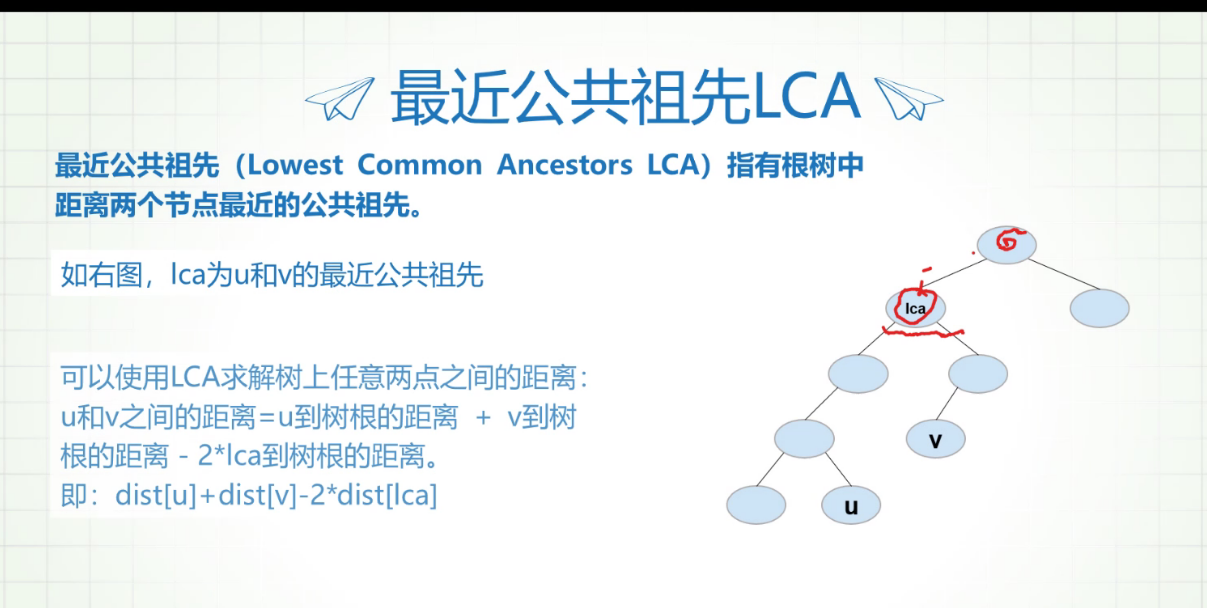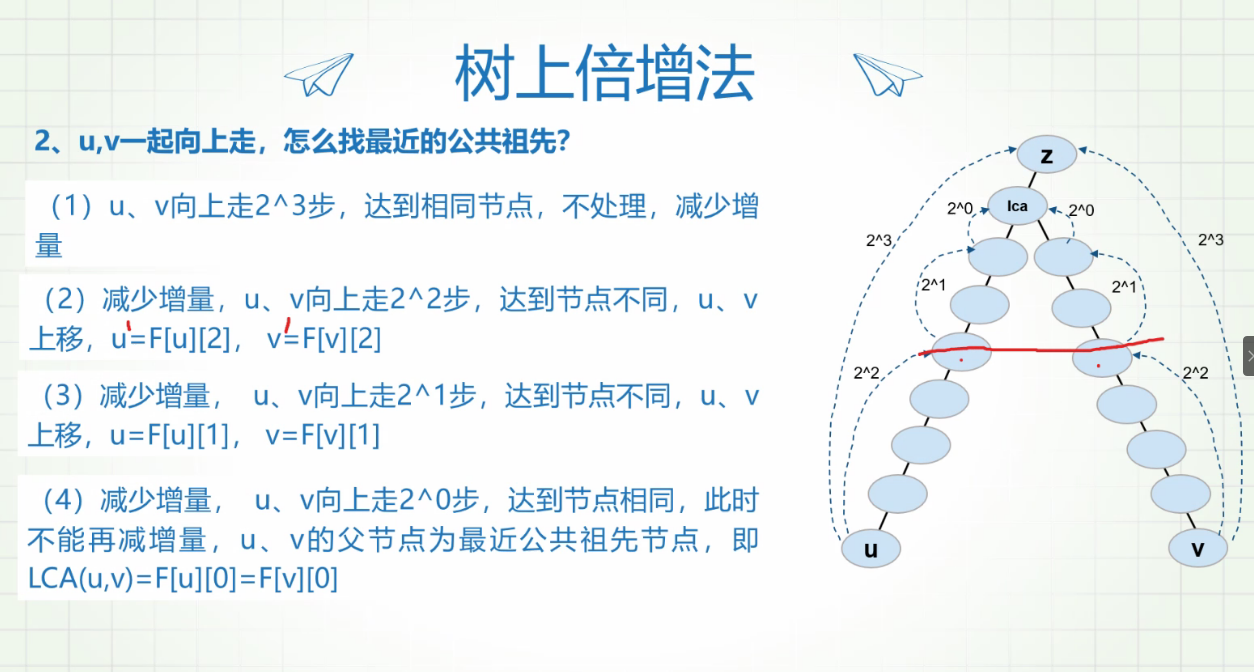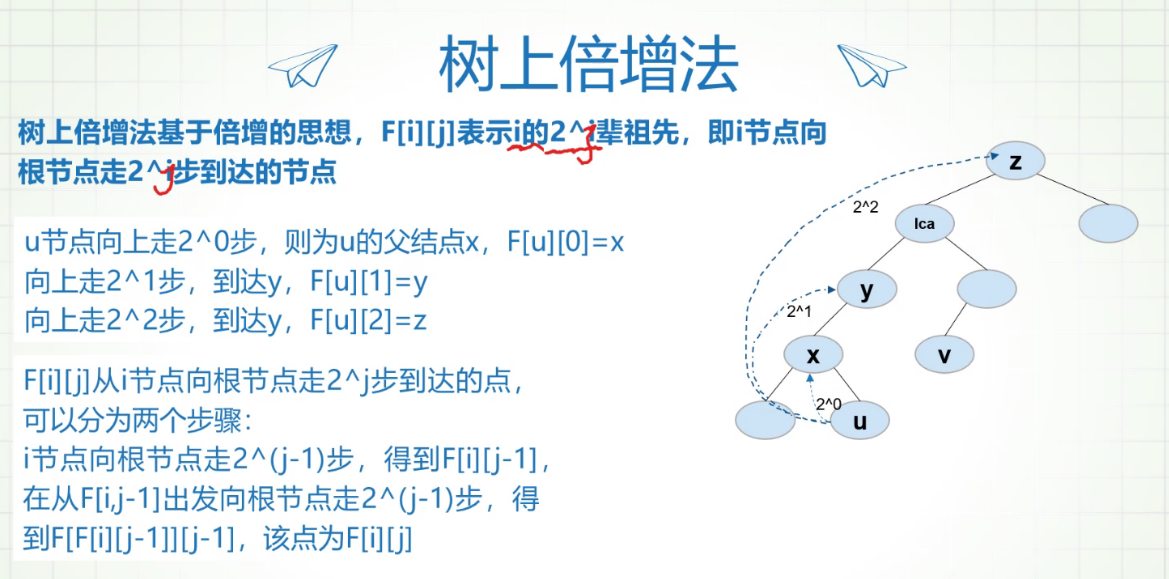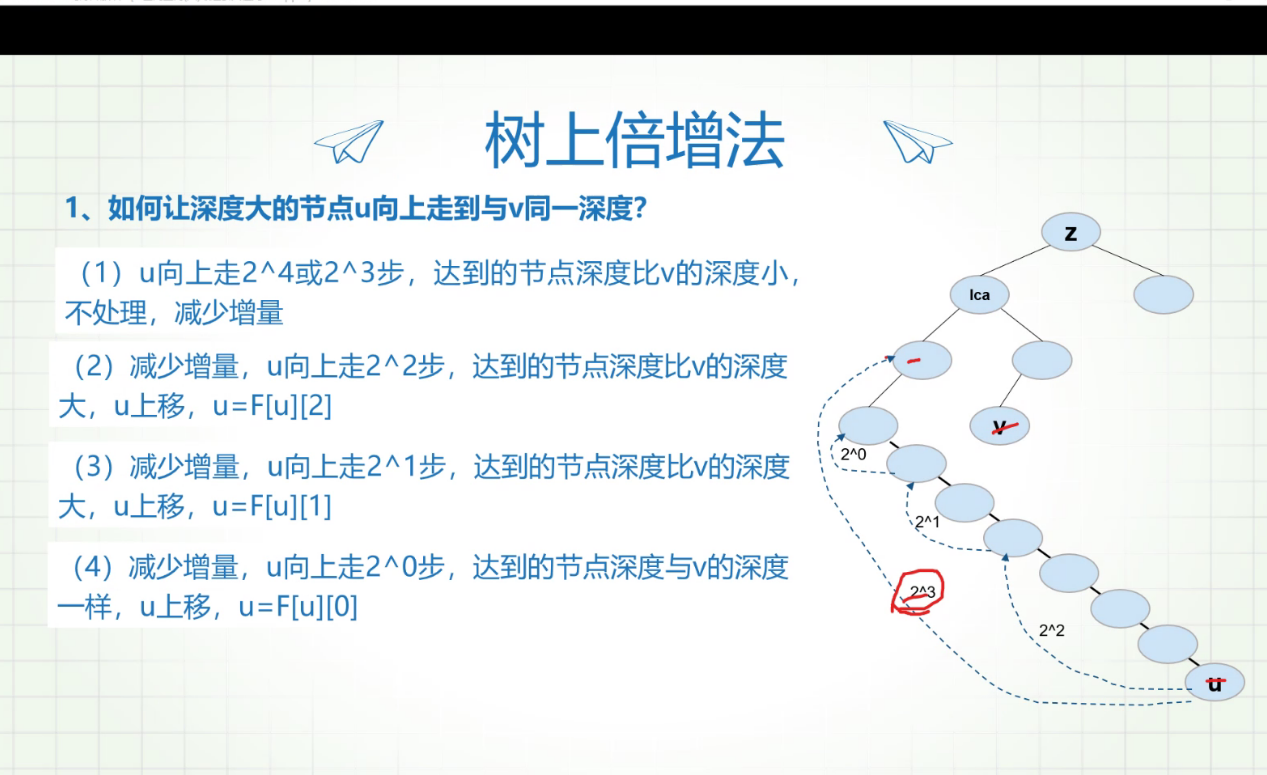title: 倍增法求最近公共祖先
date: 2022-11-15 10:31:45
tags: 算法
本文章遵守知识共享协议 CC-BY-NC-SA ,转载时须在文章的任一位置附上原文链接和作者署名(rickyxrc)。推荐在我的个人博客阅读。

最近公共祖先(Lowest Common Ancestors,一般称作LCA)指有根树中距离两个节点最近的公共祖先。
前置知识
- 多叉树
在使用倍增之前,求公共祖先的方法(暴力算法):
向上标记法
从A向根节点遍历,记录每个节点,
然后B向根节点遍历,遇到标记过的节点就结束。
同步前进法
将A,B中较深的节点走到同一深度,然后一起向上直到走到同一节点。
树上倍增法(主角)

修正:表示j的 \(2^i\) 辈祖先。
(与ST有异曲同工之妙)
数据结构
std::vector<int> edge[maxn];//链式前向星
int depth[maxn],//节点的深度
fath[maxn][32];//父亲节点,类似于ST表
初始化LCA
void initLCA(int index, int father)
{
fath[index][0] = father;
depth[index] = depth[father] + 1;
int k = log2(depth[index]) + 1;
for (int i = 0; i < k; i++)
fath[index][i] = fath[fath[index][i - 1]][i - 1];
for (auto t : edge[index])
if (father != t)
initLCA(t, index);
}
步骤:
- 将
A,B移动到同一深度 - 向上倍增:
将A和B移动到同一深度


代码如下:
int queryLCA(int nodeA, int nodeB)
{
if (depth[nodeA] < depth[nodeB])
return queryLCA(nodeB, nodeA); // 先颠倒顺序
while (depth[nodeA] > depth[nodeB]) // 将较深的节点跳到相同层
{
int __t = log2(depth[nodeA] - depth[nodeB]);
nodeA = fath[nodeA][__t];
}
if (nodeA == nodeB) // 如果已经在一起了
return nodeA;
for (int jmp = log2(depth[nodeA]); jmp >= 0; jmp--) //往上跳相同的层级
{
if (fath[nodeA][jmp] != fath[nodeB][jmp])
nodeA = fath[nodeA][jmp],
nodeB = fath[nodeB][jmp];
}
return fath[nodeA][0];
}
模板题目及解析
P3379-【模板】最近公共祖先-LCA
这道题一看就是裸的LCA,直接打板子就行。
标签:index,int,nodeB,祖先,fath,nodeA,depth,倍增,法求 From: https://www.cnblogs.com/rickyxrc/p/17004220.html